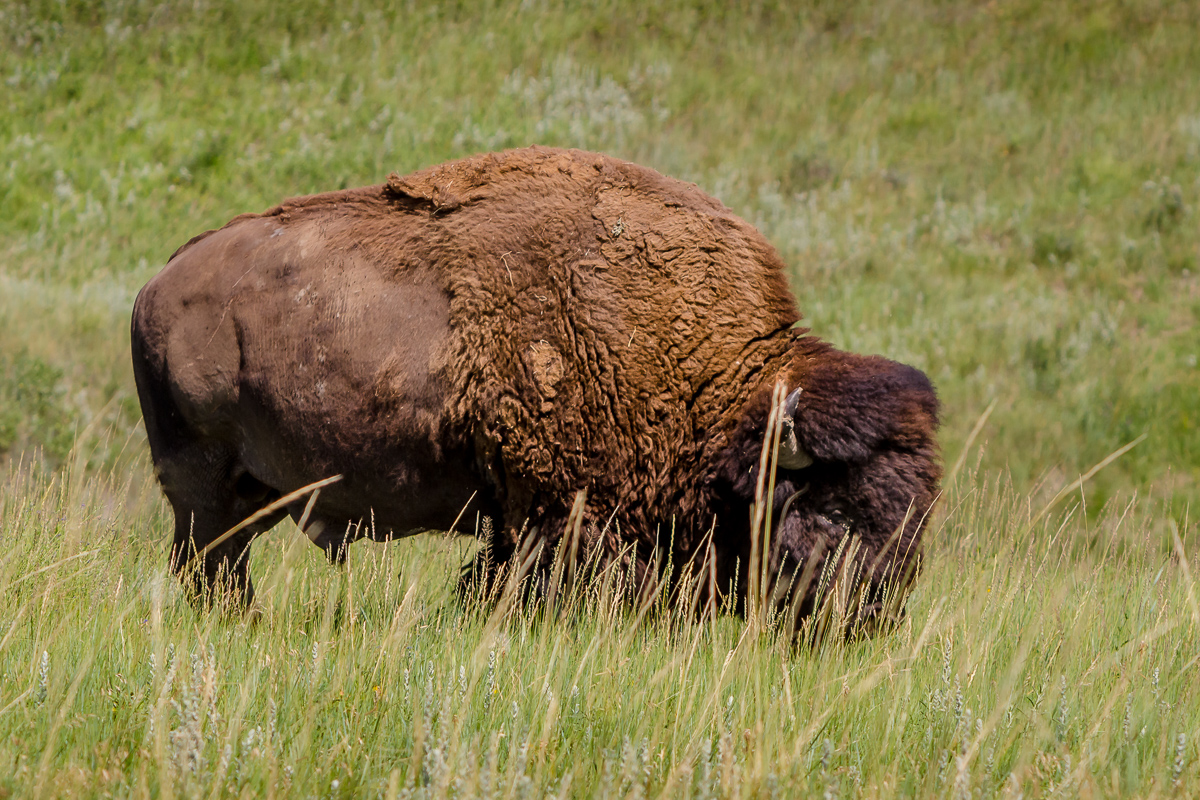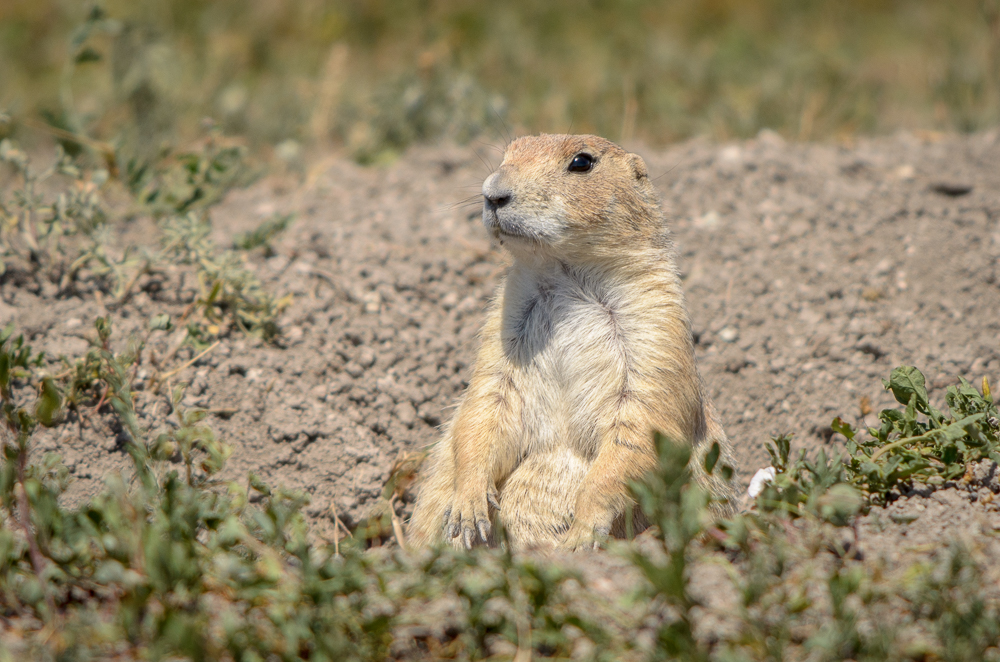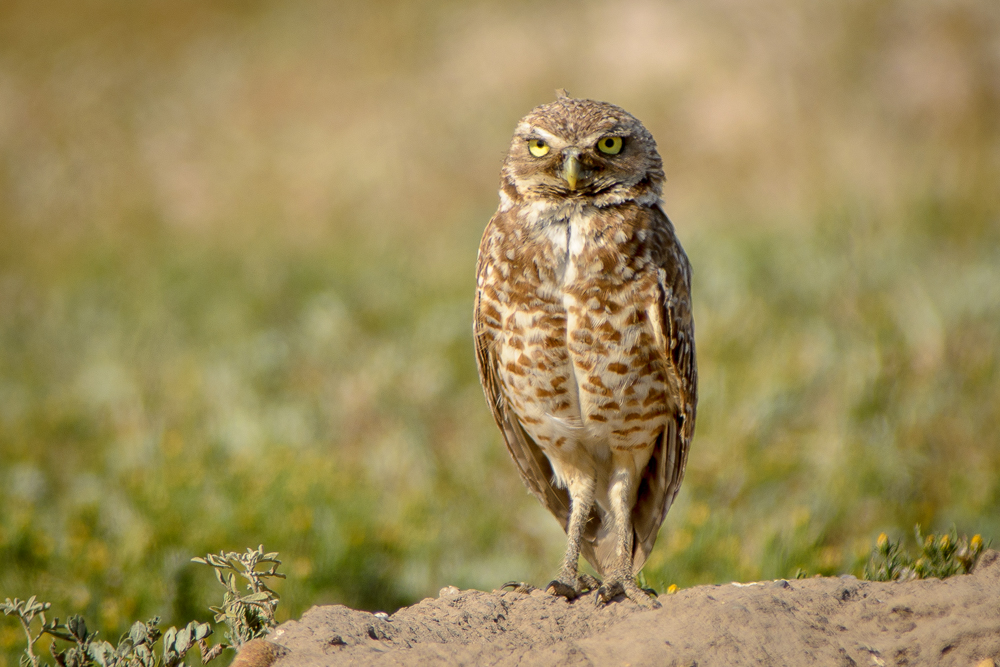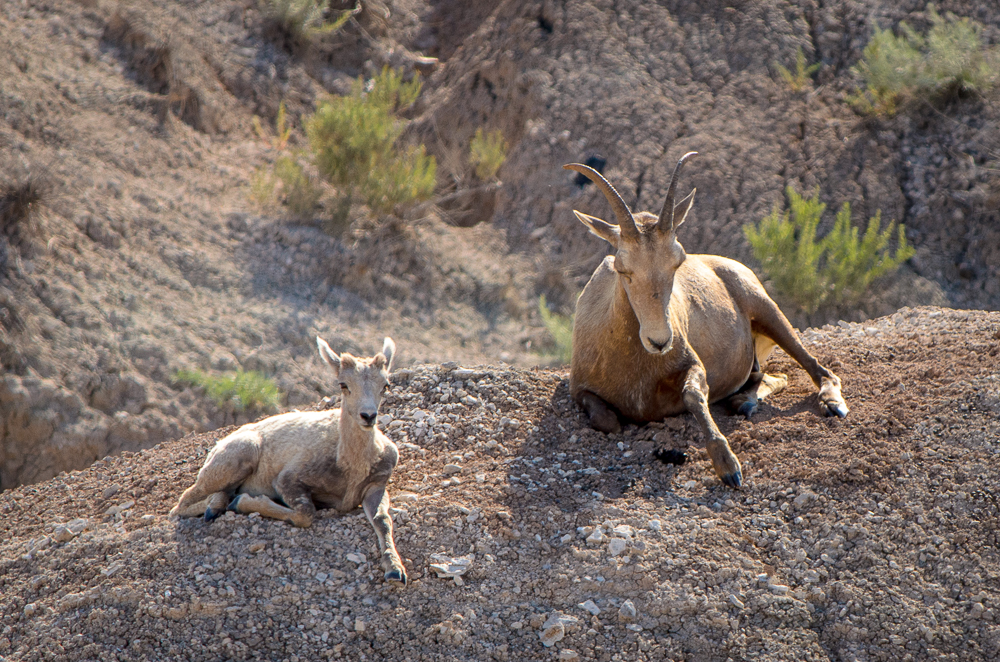
Badlands National Park abounds with wildlife, all roaming free. A quick Google search will bring up a list of what is available to see and photograph. However, while visiting there I found only a handful of species that are commonplace and easy to locate.
Despite being easy to find, they are not necessarily easy to photograph. In order to make good wildlife photos, you need to know certain camera handling and setting techniques. You also need to be able to approach wildlife safely, not stressing the animals out or putting yourself in danger. It requires a lot of patience and sometimes getting dirty.
I will cover the equipment and techniques I use in wildlife photography in an upcoming blog post. Meanwhile, let’s take a look at some of the wildlife I was able to photograph in Badlands National Park.

Prairie dogs – Literally everywhere and very easy to find. Being a burrowing animal, you will find them in the open prairies of the park rather than the in the sandstone mountains and washes. Many prairie dogs have accepted the tourists and will remain outside of their holes. They make excellent subjects and are easy to photograph with a little patience.

Burrowing Owls – If you find the Prairie Dogs, you have found the Burrowing Owls. There small owls live in abandoned Prairie Dog holes. They are not as trusting of humans as Prairie Dogs though, making them harder to photograph. They tend to disappear into their holes or fly off to another hole across the field.
Coyotes – If out at night, you can hear them in the distance. When out photographing Prairie Dogs, I had an opportunity to see a coyote skirting the area. I’m assuming it was looking for a Prairie Dog snack. Due to the distance, I wasn’t able to get a good shot of the Coyote but enjoyed watching it search for prey nonetheless.

Bighorn Sheep – Fairly easy to find while driving through the park. They tend to hang out in small herds along the boarder of the open prairie and the mountains. I’m assuming they graze the prairie during the day and use the mountains as protection during the night. The herds in the national park are quite used to humans and cars. They will wander right out into the road. The easiest way to find them is to look for the traffic jams and cars pulled off the side of the road.
Bison – The granddaddy of mammals inside Badlands National Park, the bison can be found along the Sage Creek Rim Road. A 25-mile long washboarded dirt road. The large herd made up of cows, calves, and juveniles can be elusive. During the two weeks I was there, I encountered the main herd once, literally on the Sage Creek road. I never saw them again. The bulls live a solitary life on the prairie and only visit the herd during mating season. If you spend enough time driving the Sage Creek Road, you learn where certain bulls hang out.
Birds, reptiles, and insects – There are many species of each in the Badlands that can be photographed. Speaking of which, everywhere inside Badlands National Park are signs warning to beware of the Prairie Rattlesnake. I did not see any during my visit, but I was keeping an eye out for them.
A quick note on wildlife and personal safety
At no time should you ever approach an animal so close that your presence stresses it out. Nor should you put yourself or your camera in a position where you are cutting off an animal’s means of escape. Breaking these rules can result in harm to the animal or yourself should the animal feel threatened enough to turn on you. Keep in mind, sometimes the harm to an animal is not apparent. If you encroach on a nest or den, it is possible to stress an animal out to the point where they will abandon their young.
I highly recommend consulting with local experts before trying to photograph any wild animal. They will appreciate the concern and more than likely provide you with a wealth of information. They may also direct you into areas where you are more likely to find animals.
